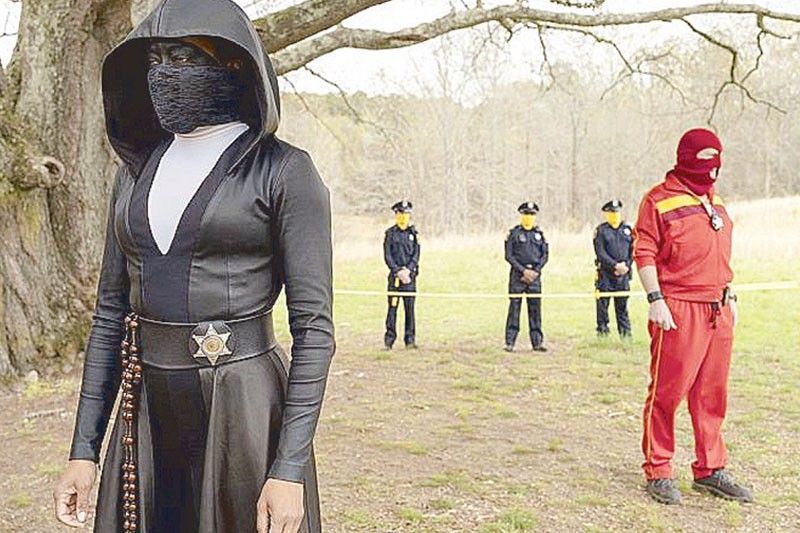‘Watchmen’ gets a timely reboot

The opening sequence of Watchmen, HBO’s series based on Alan Moore’s graphic novel, is so shocking you may think it’s fiction: the African-American citizens of Tulsa, Oklahoma, 1921, are suddenly attacked by white mobs and KKK members who shoot, burn and kill them in the street, as well as raining down bombs and bullets by air attack.
Except this event actually happened. The “Tulsa City Riot” of 1921 is a shocking chapter in race relations in the US, sparked by an altercation between a white man and a black man that led to a lynch mob basically killing up to 300 black residents, injuring 6,000 and setting the place ablaze. This was a case of a white mob, working with the express approval of city government, to tear down a well-off African-American community in an explosion of racism. The incident was so shocking, it remained a well-guarded secret in Tulsa, until a congressional committee reinvestigated the incident in 1996 and awarded reparations.
It’s just one of the ways Damon Lindelof’s “remix” of the 1980s graphic novel veers widely from Moore’s original (he’s already disowned the HBO series, but then he also did that for the 2009 movie version); by setting his Watchmen decades after the original, Lindelof’s world becomes more directly relatable to modern America, in the way that Hulu’s Handmaid’s Tale turned Margaret Atwood’s prescient novel about women’s rights into a reflection on Trumpian politics.
Say what you will about Lindelof, the navigator of both Lost and HBO’s The Leftovers is nervy as hell. The new Watchmen may not be to the liking of diehard Moore fans, but it’s engaging, twitchily alive, and full of ideas that could expand into a very interesting standalone series.
We still have most of Moore’s plot points: it’s still an alternate history in which the existence of at least one superhuman — Dr. Manhattan — has changed America’s path in profound ways. While the original Moore story had Dr. Manhattan and masked vigilantes steering President Nixon into multiple terms in the White House, heading off the Soviets and the Cold War until the ’80s came a-tolling to collect the bill, Lindelof’s version focuses on a post-Nixonian America, where the social pendulum has reversed course under perennial liberal President Robert Redford (yes, you read that right).
As we step into Watchmen Episode 1, America is a divided mess: white supremacists (calling themselves the “Seventh Kavalry” and wearing Rorschach masks) battle it out with a police force donning yellow masks to protect their identities, while the use of lethal force to fight crime is strictly controlled by police headquarters. It’s an odd reshuffling of contemporary American culture, part politically correct, part tribally racist. The cultural script is flipped every which way, with the thread of the Tulsa Race Riot — an outrageous eruption of racial hatred — looking to run through the series as its driving pulse.
Was Lindelof wise to tamper with Moore’s source material? Hard to say, after only one episode. But it is audacious. All of Moore’s characters eventually show up, in one form or another. (The original Watchmen characters also pop up in a cartoon TV-show-within-the-show called American Hero Story that diegetically flashes on television screens.)
Standouts are Don Johnson as Tulsa City’s Police Chief Judd Crawford (we hardly knew ye), Regina King as Tulsa detective Angela Abar (aka Sister Night), Tim Blake Nelson as vigilante detective Looking Glass, and Jeremy Irons as a weird patrician trillionaire who may or may not be Ozymandias from the original comic.
You thought Westworld was ambitious and confusing? Watchmen threatens to go full bear-claw at a text divinely revered by comic lovers for decades. The show, like Lindelof’s other creations, always seems poised to topple under the weight of its own surreal soufflé; but as television goes, it looks like it’s going to go places that most other shows wouldn’t touch with a 10-foot pole.
(Watch on HBO)















